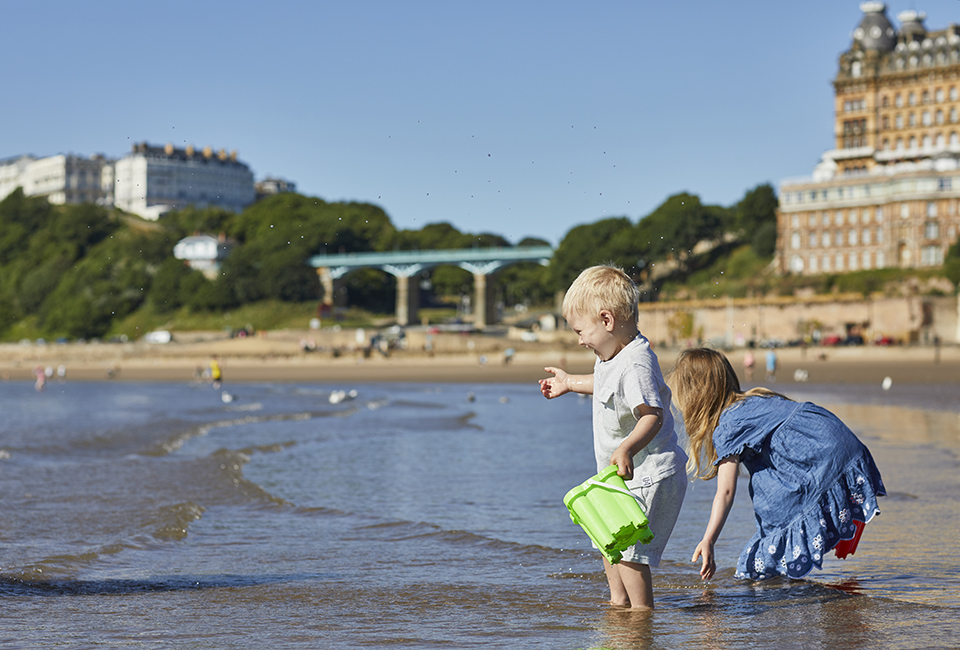Our plans for bathing water
The Environment Act 2021 introduced key changes for bathing waters in England, primarily by implementing a storm overflow discharge reduction plan to protect public health and the environment. Water companies must now reduce discharges from storm overflows near bathing waters to an average of two per season at coastal locations and one per season inland by 2035.
In order to achieve these targets, we will be making our largest ever investment into our wastewater network between 2025 and 2030.
A significant portion of this investment will be directed towards reducing discharges at storm overflows and upgrading wastewater treatment facilities near designated bathing water sites.
We’ll be sharing more details on our bathing water investment soon.
Our partnership approach
Bathing water quality is complex, with many affecting factors - this means that no one organisation could achieve all the required improvements alone. This is why a partnership approach is essential; we work closely with our partners and stakeholders under the Yorkshire Bathing Water Partnership to share expertise and local knowledge.
We’ll be sharing more details on the Yorkshire Bathing Water Partnership soon.
How are bathing waters classified?
The quality of water at officially designated bathing waters is monitored and measured each and every year. For over 30 years, the European Bathing Water Directive has set the standards for these bathing waters and has driven huge improvements in water quality.
Until 2014, bathing waters could achieve one of two possible quality levels:
- Mandatory – the required standard to 'pass' the current directive
- Guideline - the highest possible current level
However, the original directive needed updating to recognise big developments in scientific understanding. That's why the 'revised Bathing Water Directive' was agreed and put into place in 2015.
This new directive sets much higher water quality standards, has different measuring criteria, and puts more emphasis on information available to the public. Under this legislation, bathing waters are classified into four different categories:
- Excellent
- Good
- Sufficient
- Poor
The quality of bathing water at Yorkshire's beaches and inland locations is closely monitored and measured by the Environment Agency, with hundreds of water samples taken each year to determine the annual classifications.
You can find out more about water quality at specific bathing waters from the Environment Agency website SWIMFO.

Managing stormwater
What is a combined sewer overflow (CSO)?
Most of the UK's sewerage systems are made up of combined sewers. Combined sewers carry both foul water from homes and businesses as well as rainwater which falls onto paved areas and roofs. Usually, wastewater in our sewers travels to one of our wastewater treatment works to be treated before it is returned to rivers or the sea.
However, during heavy or prolonged rainfall, CSOs can act as essential relief valves for the sewer network when it is at capacity. They divert heavily diluted stormwater into rivers or the sea to prevent the network from backing up, and potentially flooding homes, businesses, and roads. CSOs are licensed by the Environment Agency.
Can CSOs affect the quality of bathing water?
CSOs, when in operation, can affect the quality of bathing water. Our live map allows everyone to see when our overflows last discharged and make an informed decision about whether to swim. Check out our live storm overflow map.
Can I find out when a CSO overflows near me?
We want to be transparent about the operation of our storm overflows. Anyone wanting to know more about the operation of storm overflows in their local area, at a bathing water site, or across the whole of Yorkshire can view our near-real time CSO operations on our Event Duration Monitoring (EDM) live map.
Visit our live storm overflow map
We also work with the environmental charity Surfers Against Sewage (SAS) to provide a real-time notifications service. This service lets people know by text message or online when certain bathing water CSOs operate and provides useful information for water users.
Visit SAS for more information
Can I find out when a CSO overflows near me?
We believe in providing people with information which can help them make informed choices about when to go in the sea. That's why we're working with the environmental charity Surfers Against Sewage (SAS) to provide a real-time notifications service. This service lets people know by text message or online when certain coastal CSOs overflow.
Frequently asked questions
How many designated bathing waters does Yorkshire Water have?
Yorkshire currently has 18 designated coastal bathing waters and three designated inland bathing waters.
What’s the current quality of bathing water in Yorkshire?
Bathing water quality varies across Yorkshire’s designated sites. For the most up-to-date sample results and classifications, please visit the Environment Agency website SWIMFO.
How often is the water quality tested at Yorkshire’s Bathing Waters?
The Environment Agency samples water quality for regulatory purposes up to 20 times per bathing water season (May-September). Some beaches may have reduced testing due to continuously excellent water quality. Sampling frequencies for specific locations can be found on the Environment Agency website SWIMFO.
What can impact bathing water quality?
Many things can impact bathing water quality, including wastewater treatment final effluent or discharges from storm overflows, agricultural run-off, weather conditions, trade effluent discharges, bathing water usage and many more. This is why working in partnership is essential to address the many varying issues.
What are you doing to reduce discharges from storm overflows?
Over the next five years we will be investing in our network at Robin Hood’s Bay, Scarborough, Bridlington, Runswick Bay, Ilkley, Wetherby and Knaresborough to reduce discharges from storm overflows at these bathing water locations. We’re currently in the planning stages for these projects - more information on these schemes will be available soon.
What does the future look like for Bathing Water?
With the increase in popularity of wild swimming, we anticipate there will be a rise in demand for further inland bathing water designations.
Following the 2024 DEFRA Bathing Water consultation, there are also key regulatory changes on the horizon, and we will be working closely with other water companies and governing bodies to implement these.
We will continue to deliver improvement schemes on our network to meet regulatory targets and to work in partnership to address many of the wider factors affecting bathing water quality.

